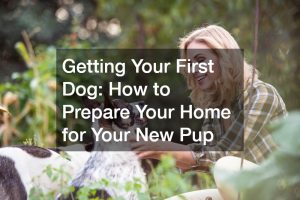Bringing a new puppy home is an exciting time, but it requires preparation, especially when it comes to ensuring your yard is safe and welcoming. This article will guide you through the essential steps to create a perfect outdoor space for your furry friend. Let’s explore how to prepare your yard for a puppy.
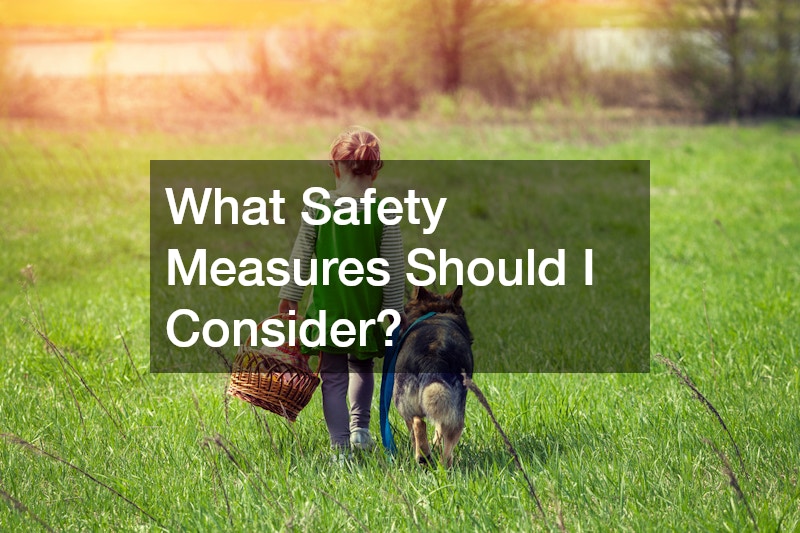
What Safety Measures Should I Consider?
Ensuring a safe environment for your puppy begins with assessing potential hazards. Consider installing a robust dog fence to prevent your puppy from wandering. Engaging local fence contractors can ensure the job is done professionally, considering the unique landscape of your yard.
It’s also crucial to regularly check your yard for toxic plants or chemical exposure. Consult with a local veterinarian to identify species native to your area that might pose a threat to your puppy. You might even contact landscaping companies to help remove or replace dangerous plants. In addition, address any sharp objects or debris that might injure your puppy. Routine yard maintenance is key!
How to Prepare Your Landscaping for a Puppy
Bringing home a new puppy is an exciting time, but your yard needs to be as ready as you are for the arrival of your furry friend. Preparing your landscaping for a puppy ensures they can enjoy the outdoors safely while protecting your yard from damage.
Create a Safe Play Area
Designate a specific part of your yard for your puppy to play. As you learn how to prepare your yard for a puppy, choose a fenced area where they can run freely without escaping. Puppies love to dig, so consider laying down gravel or mulch in some spots to prevent holes from appearing all over your lawn.
Choose Puppy-Friendly Plants
Not all plants are safe for dogs. Some common landscaping plants, like azaleas and lilies, are toxic if ingested. Opt for pet-friendly greenery such as lavender, sunflowers, or roses. Researching your current plants and replacing harmful ones can protect your puppy from illness or injury.
Keep Paths Clear and Accessible
Puppies love to explore, so create pathways around your yard. Use materials like stone, brick, or gravel that can withstand a puppy’s curiosity. Clear walkways will encourage them to move around while preventing them from trampling over your flower beds.
Consider Soft Grass
Puppies will spend a lot of time running, rolling, and relaxing on your lawn. Consider planting soft, durable grass varieties like fescue or Kentucky bluegrass. These grass types are tough enough to endure puppy play while being gentle on their paws.
By preparing your landscaping with these tips, your yard will be a safe and enjoyable space for your puppy to explore while keeping your outdoor space looking beautiful.
How Do I Puppy-Proof My Yard?
How to prepare your yard for a puppy involves eliminating items that could harm or attract your puppy. Ensure all fences and gates are secure and tall enough to prevent escapes, considering dog fence installation if necessary. Areas around your landscape design should be scrutinized for potential entrapments or pinch points.
Electing for non-toxic landscaping solutions ensures your puppy is safe from ingesting harmful substances. A local insect removal company can assist in reducing the presence of stinging insects or pests. Investing in spray equipment can also help maintain control over bugs without endangering your puppy.
Also, avoid leaving gardening tools or loose wires exposed, as these can be chew hazards. Proper storage solutions built by local shed builders ensure an organized environment. Regular inspections and adjustments based on your growing puppy’s behavior are vital to maintaining a safe yard.
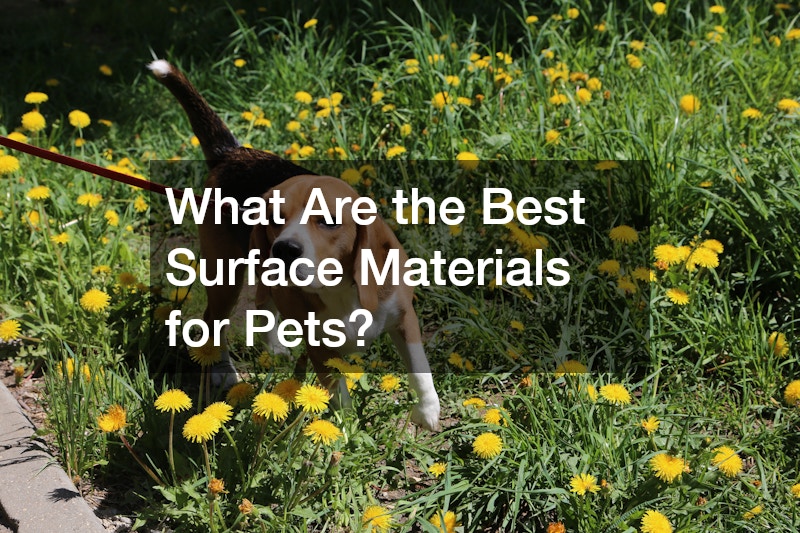
What Are the Best Surface Materials for Pets?
Choosing the right surface material is critical for how to prepare your yard for a puppy. Grass is often preferred due to its softness, but it requires maintenance and protection against pests with the help of professional services from landscaping companies. Gravel is durable but should be carefully chosen to ensure it’s not sharp or ingestible.
Artificial turf is another option that requires minimal maintenance and can be beneficial in areas with water restrictions. However, it might get hotter in the sun, so ensuring proper shade is essential. Consult with local experts in landscape design to find the best option for your climate and yard use.
Additionally, consider incorporating pathways with materials that are paw-friendly, like decomposed granite or smooth flagstones. These not only provide an aesthetic appeal but contribute to a varied and stimulating environment. Coordinating with landscape design professionals will yield a puppy-friendly yard that balances safety and appeal.
How Can I Provide Shade?
Providing adequate shade and shelter is essential in how to prepare your yard for a puppy. Natural shade, such as trees or strategically placed shrubbery, can offer relief from the sun. Engage with local landscaping companies to assess the best options for plantings that won’t harm your puppy.
If your yard lacks natural shade, consider temporary solutions like shade sails or canopy tents. These are quick solutions that can be easily adjusted or relocated as needed. Coordinate with landscape design experts to incorporate permanent structures or plants that blend functionality with aesthetics.
Should I Build a Shed for My Puppy?
If you’re bringing a new puppy home, you might be wondering how to prepare your yard for a puppy and whether you should build a shed for them. While sheds are typically used for storage, creating a designated space for your puppy can offer several benefits. Here are a few factors to consider when deciding whether to build a shed for your furry friend.
Protection from the Elements
A well-built shed can provide your puppy with shelter from rain, wind, and the hot sun. If your puppy will spend time outside, having a safe, weatherproof structure offers them a place to rest and stay comfortable. Insulating the shed can help regulate temperature, making it cozy during colder months.
Safe Outdoor Space
A shed can also serve as a secure space when you’re not able to supervise your puppy. By turning a portion of the shed into a puppy-friendly area, you can keep them out of trouble and away from potential hazards like sharp tools or garden chemicals. Adding bedding, toys, and water ensures your puppy is comfortable.
Dedicated Storage for Puppy Supplies
You can also use the shed for storing puppy supplies, such as leashes, toys, and food. This keeps your house more organized and makes it easy to access everything you need when it’s time to play or feed your puppy.
Customizable Space
One of the advantages of building a shed is that you can customize it to your puppy’s needs. You can add a doggy door, windows for ventilation, and even create a shaded outdoor area for play.
Building a shed for your puppy offers both safety and convenience, making it a practical addition to your outdoor space.
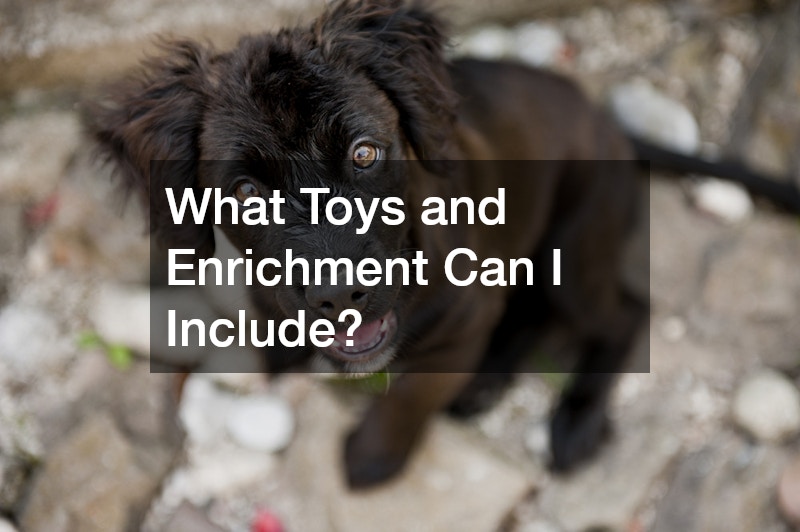
What Toys and Enrichment Can I Include?
Toys and enrichment activities play a vital role in your puppy’s development and happiness as you learn how to prepare your yard for a puppy. When finding toys, prioritize those made of non-toxic materials and appropriate for their size. Enrichment activities, like puzzles or fetch games, provide both mental and physical stimulation.
Install varied play areas in your yard to keep your puppy engaged. Dedicated spaces for specific activities, such as a sandbox for digging or a small agility setup, encourage positive energy outlets. Always consider the input of your local dog groomers regarding the appropriate types of activities for different breeds.
Regularly rotating toys and refining play areas keep your puppy interested. By observing your puppy’s preferences, you can tailor the yard environment to offer consistent engagement. Maintaining communication with dog trainers helps reinforce the quality and safety of your puppy’s exercises.
How to Setup a Potty Area in the Yard
Establishing a designated potty area is essential for maintaining a clean and orderly yard. Choose a corner away from the main play zones, ensuring it is easy to clean and access. Gravel or mulch can serve as appropriate materials for these areas, preventing mud and promoting good drainage.
Use clear boundaries or markers to help your puppy recognize this space as their potty zone. Training them consistently with positive reinforcement solidifies this area in their routines. Consulting local dog trainers might provide additional techniques specific to your puppy’s learning curve.
Regular maintenance of the potty area is necessary to prevent odors or contamination. A diligent cleaning routine keeps the space welcoming and hygienic for your puppy. Seek advice from local landscaping companies for tips on integrating potty areas into your landscape design sustainably.
How Do I Control Fleas and Ticks in the Yard?
Controlling fleas and ticks in your yard demands regular management strategies. Hiring a local insect removal company as you learn how to prepare your yard for a puppy provides professional insight into lesser-known hiding spots and effective treatments. The frequency of service might increase during peak seasons to keep infestations at bay.
A straightforward approach to pest control includes maintaining your yard’s cleanliness and eliminating clutter. Using natural deterrents such as cedar chips or certain plant species adds an eco-friendly layer of protection. Incorporate monthly checks into your routine, notwithstanding professional services.
If you choose DIY methods, consider investing in quality spray equipment to apply safe insecticides or repellents. Regular cooperation with your local veterinarian ensures that the products used are safe for your puppy. This proactive approach minimizes health risks while protecting your yard’s aesthetics.
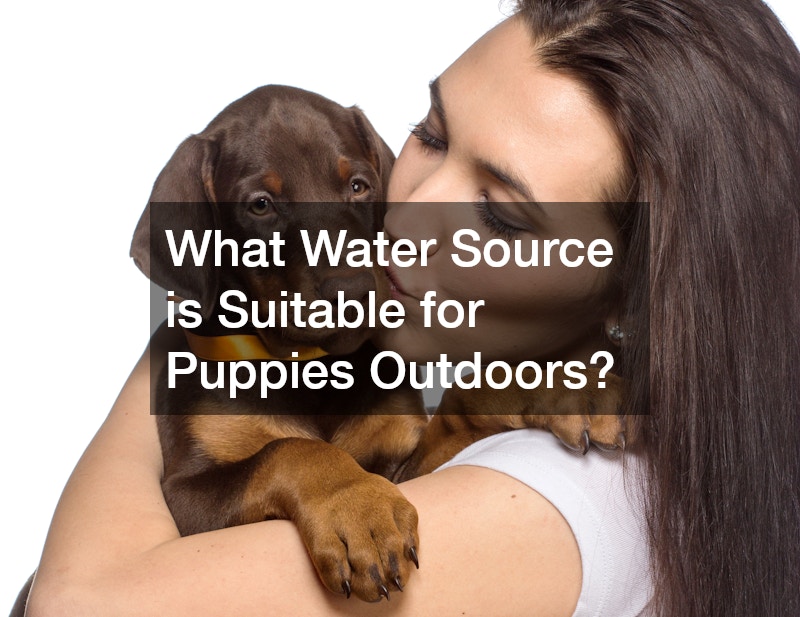
What Water Source is Suitable for Puppies Outdoors?
Having a freshwater source accessible to your puppy is vital to their hydration and overall health. Consider a dedicated water bowl that is kept in a shaded, easily reachable spot. Regular refills ensure water remains clean and cool, giving your puppy ready access at all times.
For more advanced solutions, automatic water dispensers installed outdoors offer consistent supply, and some can be directly connected to garden hoses. When selecting these devices, prioritize durability and ease of cleaning to ensure hygiene.
Keep the water station near their play or rest areas but avoid spots exposed to direct sunlight. This promotes consistent drinking habits and helps prevent overheating. Work with local landscape design experts to seamlessly integrate water features into your yard’s overall setup.
How Can I Ensure My Puppy Stays Nearby?
To prevent your puppy from wandering, it is crucial to implement boundaries as you learn how to prepare your yard for a puppy. Installing a dog fence that is both secure and accommodates their growth helps in keeping them safe. Local fence contractors are valuable resources when customizing these barriers to match the yard’s terrain.
Incorporating your puppy’s interests and favorite activities in the yard cultivates a sense of comfort and familiarity. Engaging toys and routine interactions motivate your puppy to stay within sight, reducing the temptation to roam. Collaborate with local dog trainers to establish training routines reinforcing the yard as safe territory.
In certain cases, electronic collars may be an option, but they should always be used ethically, ensuring the safety and well-being of your puppy. This method can be discussed with your veterinarian for suitability. Reinforcing recall commands regularly also strengthens your puppy’s inclination to stay nearby.
How to Handle Digging in the Yard
Puppy digging can be an instinctual behavior that needs to be channeled positively. Assigning a specific ‘digging area’ with loose soil or a sandbox directs their energy constructively. Rewarding your puppy when they dig in the appropriate space reinforces positive behavior.
If digging becomes problematic, consider redirecting your puppy’s attention with toys or increased playtime. Identifying the source of the behavior, such as boredom or finding a cool spot, is key to addressing underlying needs. Help from local dog trainers offers guidance tailored to your puppy’s specific habits.
Consistent monitoring and maintenance ensure that inappropriate digging is noticed and corrected swiftly. Combining various approaches, from training to designated dig zones, reduces damage to your yard’s landscape design. Consult with local landscaping companies to find a puppy-friendly ground cover that withstands exploration.
Learning how to prepare your yard for a puppy requires careful planning, but putting effort into creating a safe and engaging outdoor space will contribute to your puppy’s happiness and well-being. By considering the solutions provided in this article, you’ll create a yard that balances safety, fun, and relaxation for your new furry family member. Addressing each aspect, from surface materials to controlling pests, integrates both durability and aesthetic harmony in your pet-friendly outdoor haven.





